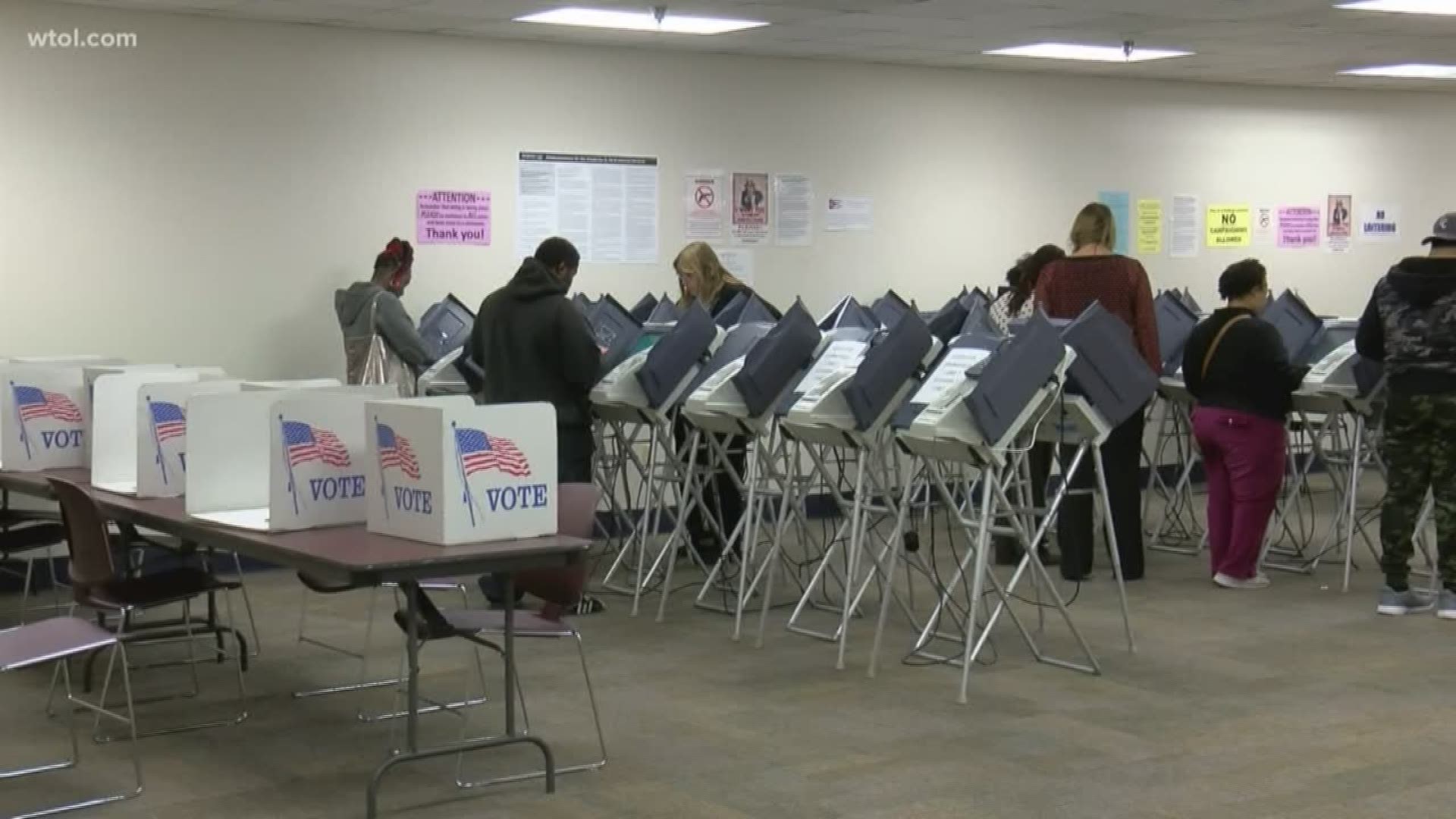TOLEDO, Ohio — Early voting in Ohio is underway, and registered voters can cast ballots up until the primary election on March 17. The primary election features elections between candidates of the same political party - with the Democratic presidential primary getting top national billing - along with some ballot issues.
Primary Election Day is March 17, which is also St. Patrick's Day. Here is everything you need to know about voting, from polling sites to sample ballots.
See if you're registered
To vote in the primary, you must already be registered to vote. In Ohio, the rule is you must be registered at least 30 days before an election. You can check to see if you're registered here. Contact your county board of elections regarding any questions pertaining to your voter registration. The list of all 88 county boards of election can be found here.
If you are unable to locate your voter registration information but think you are registered to vote and you have not moved outside of your county of prior registration, you may be eligible to cast a provisional ballot during in-person absentee voting period at an appropriate early voting location or the county board of elections, or on Election Day at the correct polling place for your current address that may be counted.
Where can you vote in-person
Registered and eligible voters may vote at any early voting location located in the county in which they live. You can vote at your county's respective board of elections office, addresses and phone numbers of which can be found at the link here. Note that Lucas County is one of three counties in Ohio that has a separate early voting center. Lucas County's Early Vote Center is at the Ohio Means Jobs Building, 1307 Monroe St., Toledo.
Voting times are 8 a.m. to 5 p.m., Monday through Friday until March 6. After March 6, early vote centers will have expanded hours, including weekend voting. The full early voting schedule is available here.
Voting Absentee
You can also request an absentee ballot that you can mail back or drop off at a board of elections office. Click on this link to access a PDF of the absentee ballot request form here. You can also fill out an HTML request form here that generates a PDF that you can print and mail to your county board of elections.
After the board of elections receives your absentee ballot request, it will mail you your ballot. You can track the status of your absentee ballot through the link here. You'll need to fill out your ballot and send it by U.S. Mail or deliver it in person to your county board of elections.
Absentee voting do's and don'ts
The return envelope containing your ballot must either be received by your county board of elections before the close of the polls on Election Day, or it must be postmarked no later than the day BEFORE the election, and received by the board of elections no later than 10 days after the election.
The USPS estimates it may take two to five days for your absentee ballot to be delivered to your board of elections by mail.
If you are returning your voted ballot during the week before Election Day, you should take it to USPS no later than the day before Election Day and ensure it receives a postmark. If you use a postage label purchased at a USPS customer service window or vending machine, the date on the label is the postmark. This is the USPS-recommended way to postmark your ballot. If you use postage stamps, ask that it be postmarked.
- Do not use a postage meter or an online service such as stamps.com to affix postage.
- Do make sure your ballot has enough postage.
- Do actually vote absentee if you've requested the absentee ballot. If you do not vote using the absentee ballot you've requested and you go to your polling place instead, you'll need to vote using a provisional ballot.
- Do not return a voted ballot to a board of elections by fax or email. If a voted ballot is returned by fax or email, it will not be accepted, processed or counted.
For more guidance on absentee ballots, including how voters can vote if they are hospitalized (or if you're caring for a child who is hospitalized and can't leave to vote) and military/overseas voting, click this link.
What is on your ballot
You can see exactly what is on your primary election ballot by looking at a sample ballot, available at your board of elections website. Again, the full list of county boards of election is available here. For more information on candidates and https://www.ohiosos.gov/elections/

